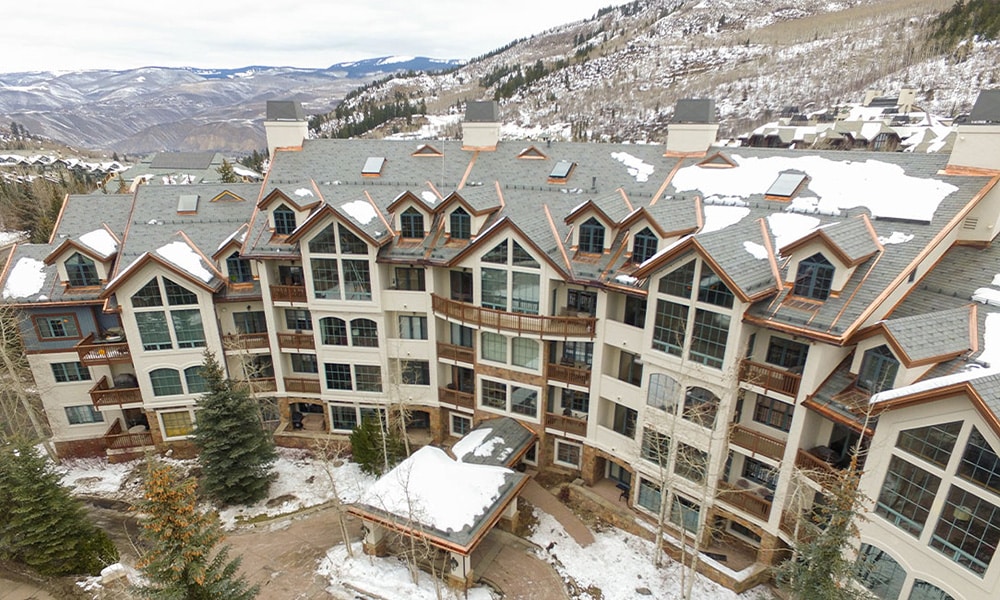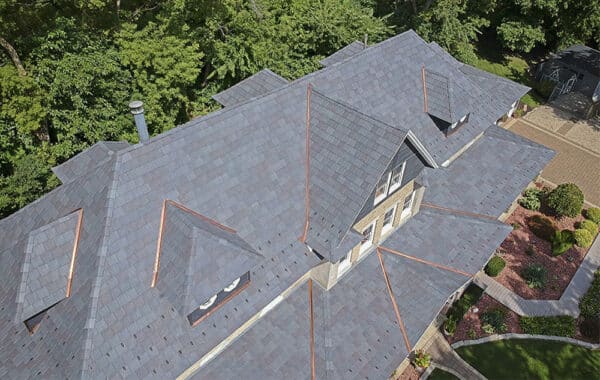How Much Snow and Ice Weight Can a Roof Hold?

Soft, white and pretty. As snow falls, it blankets everything to create a winter wonderland. However, as that snow builds up on your roof, it can be anything but a happy place.
Have you ever considered how heavy accumulating snow and ice are? More importantly, how much weight can your roof hold?
We’ve all seen pictures of extreme weather conditions where people are performing roof snow removal by shoveling mountains of snow off their roofs. Would it surprise you to learn that just one to two feet of heavy wet snow across your roof is equivalent to several tons of weight? Can your roof handle that winter load?
Professionals Weigh In
Let’s start at the beginning. During your home’s design phase, the architect or structural engineer considered the weight of snow and ice in the roof design. For permitting and approval, community building code officials also reviewed the roof’s structural design.
The standards to which a roof structure is designed are clearly defined by The American Society of Civil Engineers (ASCE). These are in their published standards, ASCE/SEI 7, Minimum Design Loads and Associated Criteria for Buildings and Other Structures. They describe the means for determining design loads including dead, live, soil, flood, tsunami, snow, rain, atmospheric ice, seismic, and wind loads and their combinations for general structural design. The Standard is modified every six years.
When considering the best roof for cold climates, architects and engineers refer to Snow Loads: Guide to the Snow Load Provisions of ASCE 7 supplements ASCE/SEI Standard 7. These provide details and authoritative explanations of the snow load provisions. Importantly, they give guidance on how much weight a roof can hold.
 Passing the Test
Passing the Test
Now, how much weight can a roof hold? And, specifically, how do you know if your home can carry the weight of ice and snow on your roof?
Homeowners of properly engineered new houses know that their homes have passed building codes. These include being able to hold the complete ground snow load as designed by the local building codes in pounds per square foot (psf) on the roof area.
For example, let’s say there’s a new roof that measures 20’ at the eave with 20’ rafters at a 10:12 pitch. It is in an area with a ground snow load of 30psf (equivalent to 1-2’ of heavy wet snow). And, it’s designed to hold 12,000 lbs (6 tons) of snow and ice weight, in addition to the roof covering materials. That’s a lot of weight on a roof.
What Kind of Roof Matters
When a roof is covered in a smooth, “frictionless” material, like composite slate or shake roofs, the weight of the ice and snow becomes of much greater concern to the homeowner. This concern is not due to what the weight of the snow and ice will do to the roof structurally. Instead, the concern is what the force and weight of 6 tons of snow and ice will do when it avalanches off a roof.
Composite roofing products, like those made by DaVinci Roofscapes, are some of the industry’s most durable roofing material, have nonporous surfaces. In addition, they do not absorb water. Under these conditions, snow and ice cannot “grab” onto the roof as they might with other roofing products, like asphalt roofing, which has textured granules.
So, when snow and ice melt, water will move to the bottom of the snowpack. There it acts as a lubrication, causing a roof snow avalanche. The homeowner doesn’t need to do anything at all to start this avalanche, the snow simply slides en masse off the roof.
Stop the “Slip Sliding Away”
In the abovementioned roof example, if the roof height measured 20’ from eave to grade, a roof snow avalanche could launch off the roof up to 15’ from the house. This could significantly harm people, pets, landscaping and anything below the eave and 15’ beyond.
To help mitigate this risk, snow retention systems should always be used on composite roofing in locations experiencing ice and snow conditions. Pad-style snow guards will act to break up the sliding ice and snow. This way it melts off the roof in smaller pieces, at a slower pace. Pipe-style snow guards serve as a barricade, holding ice and snow on the top. This allows it to melt and drop in small pieces or as water, which reduces the chance of someone getting hurt from snow and ice falling off the roof.
 Tips for Finding a Snow Retention System
Tips for Finding a Snow Retention System
When a snow retention system is designed for any roof, the ground snow load is seriously considered. The snow guard manufacturer must be sure that the designed system will be able to withstand the weight of snow and ice pushing against it.
“The first step in finding the right snow retention system,” explains Alpine SnowGuards’ company president and founder Brian Stearns, “is to estimate the mass or volume of snow and ice that one is attempting to manage.” Author of Designing a Snow Retention System for the International Institute of Building Enclosure Consultants, Stearns, says, “The most reliable way to do this is to use the local building design ground snow load. The ground snow load is used by building design professionals and is established by the American Society of Civil Engineers.”
Composite Roofs Need Snow Retention Systems
Here’s the bottom line. When you have composite roofing, the weight of ice and snow on the roof is not your primary concern. Your major consideration is that the accumulated snow and ice will avalanche down in sheets and potentially harm people or property below.
To avoid that worry, if you have composite roofing, make sure to have a snow retention system on your roof. These can be installed either at the time your new composite roof is put up or retrofitted in place at a later date.
